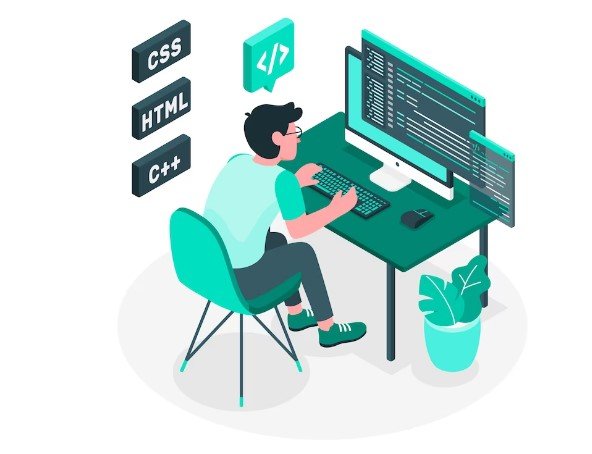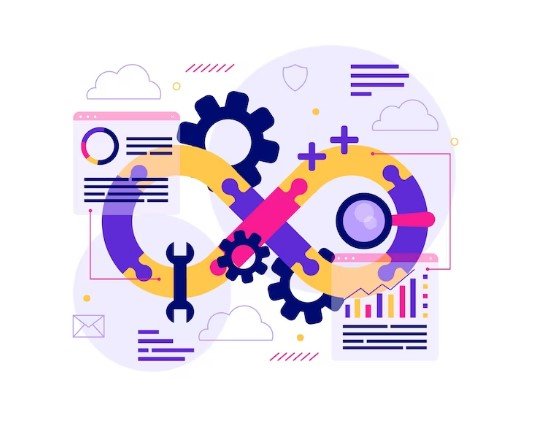
How Long Does it Take to Learn HTML and CSS?
Introduction: The Journey to Mastering HTML & CSS
Learning HTML (HyperText Markup Language) and CSS (Cascading Style Sheets) is akin to acquiring the foundational skills of digital creation. These languages are essential for web development, forming the core structure and style of web pages. The journey to mastering HTML and CSS is unique for each individual and is influenced by a variety of factors. One’s prior experience in coding, access to quality learning resources, and the level of personal dedication play significant roles in determining the pace and success of learning. Unlike many programming languages that require understanding complex logic and algorithms, HTML and CSS are more about understanding and applying a set of rules to create and style content on the web.

Understanding HTML & CSS: Basics and Beyond
What is HTML?
HTML is the standard markup language used for creating web pages. It provides the basic structure of sites, which is then enhanced and modified by other technologies like CSS and JavaScript. HTML consists of a series of elements, which you use to enclose, or wrap, different parts of the content to make it appear or act in a certain way. The enclosing tags can make a word or image hyperlink to somewhere else, can italicize words, and can make font size bigger or smaller, among many other things.
What is CSS?
CSS is the language for describing the presentation of Web pages, including colors, layout, and fonts. It allows one to adapt the presentation to different types of devices, such as large screens, small screens, or printers. CSS is independent of HTML and can be used with any XML-based markup language. The separation of HTML from CSS makes it easier to maintain sites, share style sheets across pages, and tailor pages to different environments.
Practical Applications: What You Can Achieve with HTML & CSS
Building Websites
With a solid understanding of HTML and CSS, you can start building websites. These might range from simple, static pages to complex web applications. For beginners, creating basic web pages like personal blogs, portfolios, or small business websites is a great way to start. As you advance, you can work on more complex projects that involve dynamic content and responsive design.
Enhancing Web Design
CSS plays a critical role in enhancing the design of websites. It’s used to create visually appealing layouts, choose color schemes, and implement dynamic visual effects. With CSS, a developer can transform a basic HTML document into a beautiful and professionally styled webpage. This ability to enhance the user interface makes CSS an indispensable tool for front-end developers.
Timeframe for Learning HTML & CSS: A Comprehensive Overview
Prior Coding Experience
Individuals who have prior experience in programming languages may find it relatively easier to understand HTML and CSS. This is because having a background in programming often means you are already familiar with key concepts such as syntax, logic structures, and debugging. Programming skills are transferable, and those with experience in languages like Java, Python, or C++ might find themselves more adept at comprehending the structure and logic of HTML and CSS. However, it’s important to note that HTML and CSS are distinct from traditional programming languages – HTML is a markup language and CSS is a style sheet language, focusing more on content structure and presentation rather than logic and algorithms.
Quality of Learning Resources
The quality of learning resources available to a learner significantly affects the learning curve in mastering HTML and CSS. High-quality tutorials, well-structured courses, and interactive learning platforms can provide a more comprehensive and effective learning experience. Resources like online courses from reputable educational platforms, interactive coding websites, and mentorship from experienced web developers can drastically improve the learning process. These resources not only provide structured learning paths but also often include hands-on projects and community support, which are crucial for applying and reinforcing new skills.
Time Dedication
The amount of time dedicated to practicing HTML and CSS plays a crucial role in how quickly one can learn these languages. Consistent daily practice is key to understanding and retaining the concepts of HTML and CSS. Just like learning a musical instrument or a new language, regular practice helps in solidifying understanding and building proficiency. It’s not just about the quantity of time spent, but also the quality. Focused, uninterrupted sessions, where you write code, debug, and create small projects, are far more effective than long, sporadic study sessions with little to no hands-on practice. For those serious about mastering HTML and CSS, integrating daily coding exercises into their routine can lead to significant improvements over a shorter period.

Additional Considerations in the Learning Process
Resources and Tools
Utilizing a variety of resources and tools can significantly enhance the learning process for HTML and CSS. Online tutorials offer step-by-step guides and are often interactive, allowing learners to practice as they go. Books, while more traditional, provide in-depth coverage of topics and are great for reference. Coding bootcamps, although more intensive and sometimes costly, offer structured learning environments, often with direct mentorship and real-world project experience. The choice of resources should align with the learner’s preferred style of learning, whether it be visual, auditory, or kinesthetic.
Practice and Application
The importance of practice in learning HTML and CSS cannot be overstated. Consistent practice helps in reinforcing the concepts learned and aids in understanding how HTML and CSS work in real-world scenarios. Building small projects like personal websites, portfolios, or simple web applications allows for the application of skills in a practical setting. This not only bolsters learning but also contributes to a portfolio that can be valuable for future employment opportunities.
Impact of Prior Coding Experience on Learning HTML & CSS
Benefits of Previous Experience
Individuals with prior experience in programming generally find it easier to learn HTML and CSS. Such experience often includes familiarity with syntax, problem-solving skills, and an understanding of how programming languages function. This can significantly reduce the learning curve, allowing for quicker comprehension and application of HTML and CSS concepts.
Learning Curve for Beginners
For beginners without any programming background, the initial stages of learning HTML and CSS involve understanding the basic concepts and syntax. This foundational stage is crucial and might require more time and effort. Beginners might initially find it challenging to grasp how HTML and CSS work together to create web pages, but with consistent practice, these concepts become clearer and easier to apply.
The Role of Language Proficiency in HTML & CSS Syntax Mastery
Importance of Syntax Understanding
Understanding the syntax is crucial in writing effective HTML and CSS code. Syntax refers to the set of rules that define the combinations of symbols considered to be correctly structured documents or fragments in HTML and CSS. A strong grasp of syntax is essential for creating functional and aesthetically pleasing web pages.
Tips for Non-Native English Speakers
Non-native English speakers might face additional challenges in understanding the syntax, which is predominantly in English. However, they can leverage resources available in their native languages, and regular practice can significantly improve their understanding and proficiency. Many online resources and communities offer support in multiple languages, making learning more accessible.

Setting Future Goals in Coding: Beyond HTML & CSS
Advanced Coding Languages
After gaining proficiency in HTML and CSS, learners can explore more advanced programming languages like JavaScript for front-end development or Python for a more diverse coding experience. These languages open up further possibilities in web development, software development, and data science.
Career Opportunities
Knowledge of HTML and CSS is fundamental in many technology-related careers, especially in web development and web design. These skills are often the stepping stones for roles such as front-end developers, web designers, and content managers.
Evaluating the Complexity: Challenges, Prerequisites, and Financial Aspects
Challenges in Learning
While HTML and CSS are generally considered beginner-friendly, some learners may find certain concepts, like CSS positioning and HTML semantics, challenging. The abstract nature of coding can sometimes be a hurdle, but this can be overcome with practical application and hands-on practice.
Cost of Learning Resources
A wide range of learning resources for HTML and CSS is available for free, including online tutorials, documentation, and community forums. However, some structured courses, bootcamps, and advanced tools may require a financial investment. It’s important to research and choose resources that offer the best value based on individual learning needs.
Conclusion
Mastering HTML and CSS is an achievable goal and a valuable skill set in the digital age. The timeframe for learning these languages varies based on individual factors such as prior coding experience, access to quality learning resources, and the time dedicated to practice. With consistent effort, the right resources, and a willingness to engage in practical application, anyone can gain proficiency in HTML and CSS, opening up a world of opportunities in the tech industry.

As a seasoned professional with a unique blend of skills in Computer Design and Digital Marketing, I bring a comprehensive perspective to the digital landscape. Holding degrees in both Computer Science and Marketing, I excel in creating visually appealing and user-friendly designs while strategically promoting them in the digital world.

